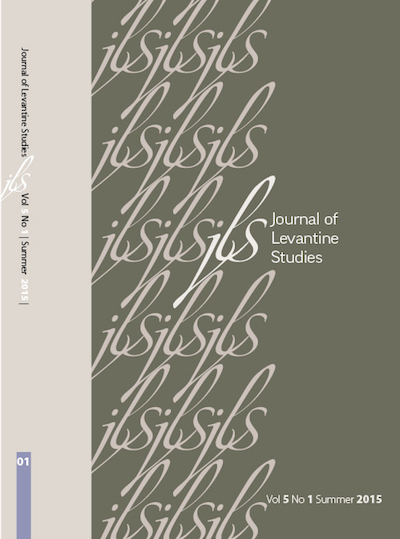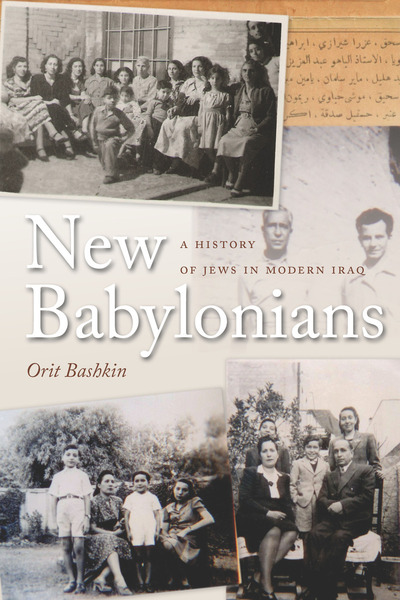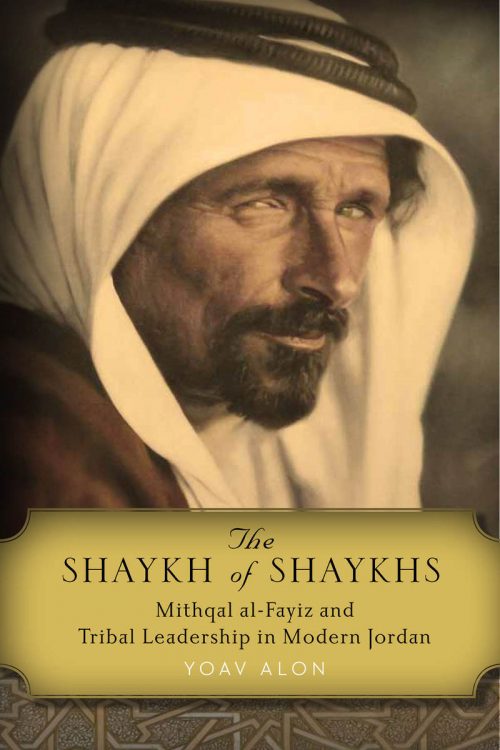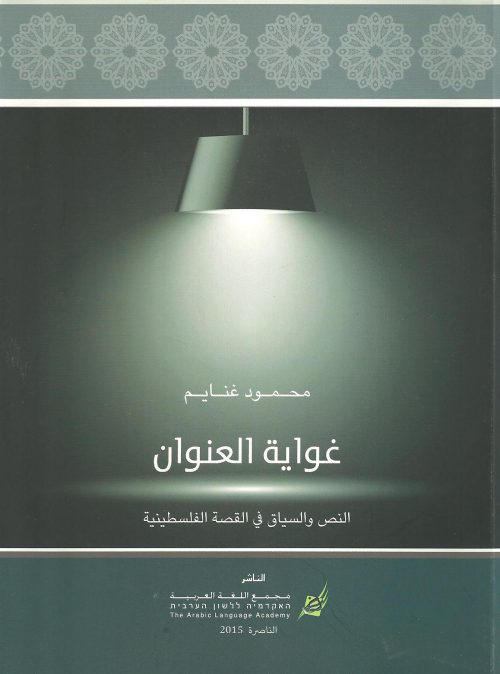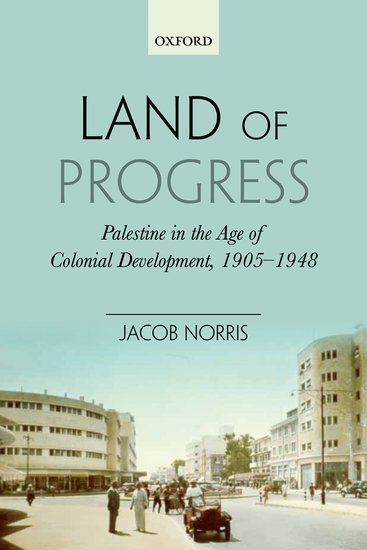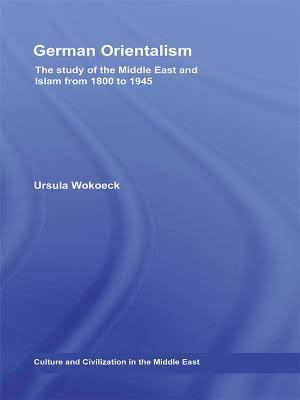-
Add to cartQuick view
The Rear Side of the Front: Gaza and Its People in World War I
Free!During the First World War, the city of Gaza, a regional hub of forty thousand souls and a major market and exporter of grains, turned into a battlefield. While the military and political consequences of this arena are well researched, this article examines its civil and social aspects as well, in order to better understand the story of the First World War in Palestine. Using both British and Ottoman documentation alongside civil accounts and memoirs, the article discusses the reasons, methods, and effects of the city’s complete evacuation and the massive destruction of its physical environment. The civil perspective of the war reflected in the fate of Gaza poses a challenge to common chronological and spatial presumptions about the war itself, and it allows a rethinking of the Mandate period in the light of postwar circumstances.
Add to cartQuick view -
Add to cartQuick view
Orit Bashkin, New Babylonians: A History of Jews in Modern Iraq Stanford: Stanford University Press, 2012. 328 pp.
Orit Bashkin, New Babylonians: A History of Jews in Modern Iraq. Stanford: Stanford University Press, 2012. 328 pp.
$5.00Free!Add to cartQuick view -
Add to cartQuick view
Review Essay: The Transforming Landscape of Turkey’s Alevi Politics
Free!Review Essay:
Elise Massicard, The Alevis in Turkey and Europe: Identity and Managing Territorial Diversity. New York: Routledge, 2013. 255 pp.Necdet Subaşı, Alevi Modernleşmesi: Sırrı Faş Eylemek. İstanbul: Timaş, 2008. 320 pp.Add to cartQuick view -
Add to cartQuick view
Yoav Alon. The Shaykh of Shaykhs: Mithqal al-Fayiz and Tribal Leadership in Modern Jordan. Stanford, CA: Stanford University Press, 2016. 224 pp.
Yoav Alon. The Shaykh of Shaykhs: Mithqal al-Fayiz and Tribal Leadership in Modern Jordan. Stanford, CA: Stanford University Press, 2016. 224 pp.
$5.00Free!Add to cartQuick view -
Add to cartQuick view
Mahmud Ghanayim. غواية العنوان: النص والسياق في القصة الفلسطينية[The Lure of the Title: Text and Context in Palestinian Fiction, 1948–2012]. Nazareth: The Arabic Language Academy, 2015. 240 pp.
Mahmud Ghanayim. غواية العنوان: النص والسياق في القصة الفلسطينية[The Lure of the Title: Text and Context in Palestinian Fiction, 1948–2012]. Nazareth: The Arabic Language Academy, 2015. 240 pp.
$5.00Free!Add to cartQuick view -
Add to cartQuick view
Tomer Levi, The Jews of Beirut: The Rise of a Levantine Community, 1860s–1930s New York: Peter Lang, 2012. 230 pp.
Tomer Levi, The Jews of Beirut: The Rise of a Levantine Community, 1860s–1930s. New York: Peter Lang, 2012. 230 pp.
$5.00Free!Add to cartQuick view -
Add to cartQuick view
Jacob Norris, Land of Progress: Palestine in the Age of Colonial Development, 1905-1948 Oxford: Oxford University Press, 2013. 241 pages.
Jacob Norris, Land of Progress: Palestine in the Age of Colonial Development, 1905-1948. Oxford: Oxford University Press, 2013. 241 pages.
$5.00Free!Add to cartQuick view -
Add to cartQuick view
Ursula Wokoeck. German Orientalism: The Study of the Middle East and Islam from 1800-1945. New York: Routledge, 2009. 333 pp.
Ursula Wokoeck. German Orientalism: The Study of the Middle East and Islam from 1800-1945. New York: Routledge, 2009. 333 pp.
$5.00Free!Add to cartQuick view -
Add to cartQuick view
The Zionist Leaders’ Fear: Perception of, Comparison with, and Reactions to the Armenian Genocide
Free!During the First World War, the Ottoman Empire was characterized by a political shift toward Turkish nationalism and the resulting growth of repressive measures against non-Turkish populations. From 1915 to 1916 this policy came to its climax in the extirpation of Anatolia’s Armenians. This change of atmosphere and the deadly actions of the Young Turk government were documented by Zionist leaders living in the empire. Not least because of the continued rise of a “Jewish Question” in Palestine, these events were regarded with anxiety. Based on research in the Central Zionist Archives, this article examines the Zionist leaders’ perception of the Armenian Genocide and focuses on the effects the massacres had on them. It expounds on the Yishuv’s problematic situation in Palestine, which was the result of repressive measures emanating from both the central and local Ottoman authorities, and shows how the Zionist leaders, keeping the fate of the Armenians in mind, coped with the situation. The topics of this article include the Zionist leaders’ concerns about the situation of the Jews living under Young Turk rule; their confrontation with various problems; and their fight for the future of the Yishuv, Zionism, and their colonization work in Palestine.
Add to cartQuick view -
Add to cartQuick view
Explaining the Unexplainable: Recent Trends in the Armenian Genocide Historiography
Free!One of the outstanding issues in Armenian Genocide historiography has been the inability of historians to come to a consensus regarding the causes, the aim of the perpetrators, and the process of the genocide. This is because the field of genocide studies is, by its nature, contentious. Over the course of the past three decades, the historiography of the Armenian Genocide in the West has evolved through the introduction of new methodologies, approaches, and more complex analyses of the genocide that venture beyond rudimentary and essentialist arguments and representations. These approaches range from arguing that religion and/or nationalism were the main factors leading to the Armenian Genocide, to the argument that the genocide was a contingent event that took place during World War I, represented by a rapid radicalization of the government’s policy toward the Armenians. This article discusses the development of the historiography of the Armenian Genocide in the West by concentrating on recent trends in the field and assesses their contribution to the understanding of the different dimensions of the genocide. Toward the end, the article provides suggestions for strengthening nascent areas in the historiography that still remain in their infancy.
Add to cartQuick view
- Home
- About JLS
- Issues
- Vol. 9 No. 1 | Summer 2019
- Vol 8 No 2 Winter 2018
- Vol. 8, No. 1: Summer 2018
- Vol. 7, No. 2: Winter 2017
- Vol. 7, 1: Summer 2017
- Vol. 6, Summer/Winter 2016
- Vol. 5, No. 2 Winter 2015
- Vol. 5, No. 1 Summer 2015
- Vol. 4, No. 2 Winter 2014
- Vol. 4, No. 1 Summer 2014
- Vol. 3, No. 2 Winter 2013
- Vol. 3, No. 1 Summer 2013
- Vol. 2, No. 2 Winter 2012
- Vol. 2, No. 1 Summer 2012
- Vol. 1, No. 2 Winter 2011
- Vol. 1, No. 1 Summer 2011
- Blog
- dock-uments
- Subscribe
- Submit
- Contact

